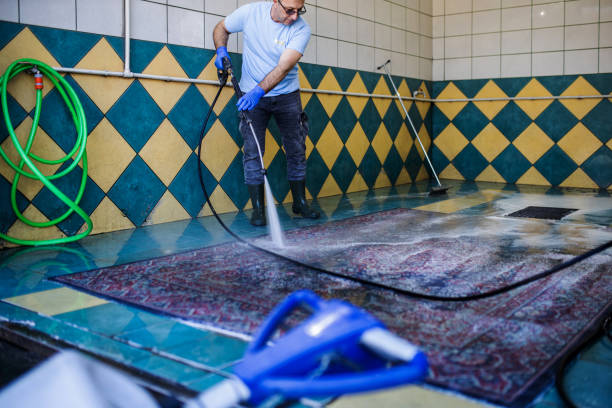How Industrial Heat Exchangers Improve Energy Efficiency in Manufacturing

Introduction
In the manufacturing sector, energy efficiency is a top priority as it directly impacts operational costs, profitability, and environmental sustainability. One of the key components that play a crucial role in enhancing energy efficiency is the industrial heat exchanger. These versatile devices facilitate the controlled transfer of thermal energy between two or more fluids, allowing for the recovery and reuse of waste heat, minimizing energy losses, and optimizing overall process efficiency. This article explores how industrial heat exchanger contribute to improved energy efficiency in manufacturing and the associated benefits.
What is the primary function of an industrial heat exchanger?
The primary function of an industrial heat exchanger is to facilitate the controlled transfer of thermal energy between two or more fluids, allowing for the recovery and reuse of waste heat.
Waste Heat Recovery and Reuse
One of the most significant contributions of industrial heat exchangers to energy efficiency lies in their ability to recover and reuse waste heat. In many manufacturing processes, a substantial amount of thermal energy is lost in the form of waste heat, which is typically dissipated into the environment. By incorporating industrial heat exchangers, this waste heat can be captured and transferred to other processes or used for preheating purposes, effectively reducing the overall energy demand.
For example, in a chemical plant, the hot exhaust gases from a reactor can be passed through a heat exchanger, where their thermal energy is transferred to incoming process streams or used to generate steam for other applications. This not only reduces the energy required to heat the incoming streams but also minimizes the need for additional fuel consumption or external heating sources.
Energy Conservation and Cost Savings
The recovery and reuse of waste heat facilitated by industrial heat exchangers directly translate into significant energy conservation and cost savings for manufacturing facilities. By reducing the demand for primary energy sources, such as fossil fuels or electricity, manufacturers can lower their energy bills and operational expenses. Additionally, by optimizing energy utilization, industrial heat exchangers contribute to a more sustainable and environmentally friendly manufacturing process.
How do industrial heat exchangers contribute to cost savings in manufacturing facilities?
Industrial heat exchangers enable the recovery and reuse of waste heat, reducing the demand for primary energy sources like fossil fuels or electricity, which directly translates into lower energy bills and operational expenses for manufacturing facilities.
Process Efficiency and Productivity
Efficient heat transfer processes are essential for maintaining optimal operating conditions and maximizing productivity in manufacturing. Industrial heat exchangers play a vital role in ensuring that processes operate within the desired temperature ranges, preventing overheating or overcooling that could lead to equipment failures, product quality issues, or safety hazards.
By precisely controlling the temperature of process streams, industrial heat exchangers enhance overall process efficiency, reduce downtime, and minimize the need for frequent equipment maintenance or replacements. This results in improved productivity, increased output, and higher profitability for manufacturing facilities.
Compact Design and Space Optimization
Industrial heat exchangers are engineered to maximize heat transfer surface area while occupying minimal physical space. Their compact design allows for efficient heat transfer in a relatively small footprint, making them ideal for space-constrained manufacturing facilities or applications where space is at a premium.
This space-saving advantage not only optimizes the utilization of available floor space but also reduces the overall installation costs and simplifies integration into existing manufacturing processes or new facility designs.
What is a key advantage of the compact design of industrial heat exchangers?
The compact design of industrial heat exchangers allows for efficient heat transfer while occupying minimal physical space, making them ideal for space-constrained manufacturing facilities or applications where space is at a premium.
Versatility and Adaptability
Industrial heat exchangers are available in various configurations, such as shell-and-tube, plate, and compact designs, each with its unique advantages and suitability for different applications. This versatility allows manufacturers to select the most appropriate heat exchanger type based on their specific process requirements, fluid properties, temperature ranges, and pressure conditions.
Furthermore, industrial heat exchangers can be customized or scaled to accommodate changes in production volumes, process modifications, or future expansion plans. This adaptability ensures that manufacturers can future-proof their operations and maintain energy efficiency as their business grows or evolves.
Reduced Environmental Impact
By improving energy efficiency and minimizing energy losses, industrial heat exchangers contribute to a reduced environmental impact for manufacturing facilities. Lower energy consumption translates into decreased greenhouse gas emissions and a smaller carbon footprint, aligning with sustainability goals and environmental regulations.
Additionally, advanced heat exchanger designs can incorporate environmentally friendly materials and efficient heat transfer mechanisms, further minimizing their ecological footprint and promoting sustainable manufacturing practices.
How do industrial heat exchangers contribute to reducing the environmental impact of manufacturing facilities?
Industrial heat exchangers improve energy efficiency and minimize energy losses, leading to reduced greenhouse gas emissions and a smaller carbon footprint. Additionally, advanced heat exchanger designs can incorporate environmentally friendly materials and efficient heat transfer mechanisms, further minimizing their ecological footprint.
Maintenance and Reliability
High-quality industrial heat exchangers are designed and constructed using durable materials that can withstand harsh operating conditions, ensuring reliable performance and minimizing unplanned downtime. Regular maintenance and cleaning procedures can further extend the service life of these components, reducing the need for frequent replacements and associated costs.
Furthermore, many modern industrial heat exchangers can be integrated with advanced monitoring and control systems, enabling predictive maintenance and real-time performance optimization, further enhancing their reliability and energy efficiency.
Integration with Existing Systems
Industrial heat exchangers can be seamlessly integrated into existing manufacturing processes or incorporated into new facility designs. Their modular nature and scalability allow for easy integration with other equipment, such as boilers, chillers, or process control systems, ensuring a cohesive and optimized overall system.
This integration capability minimizes the need for extensive modifications or replacements, reducing installation costs and downtime associated with process upgrades or expansions.
Conclusion
Industrial heat exchanger play a pivotal role in improving energy efficiency in manufacturing processes. By facilitating the recovery and reuse of waste heat, optimizing process temperatures, and minimizing energy losses, these versatile components contribute to significant cost savings, increased productivity, and reduced environmental impact. With their compact design, versatility, and adaptability, industrial heat exchangers offer a sustainable solution for manufacturers seeking to enhance energy efficiency, improve profitability, and align with environmental sustainability goals. As the demand for energy-efficient manufacturing practices continues to grow, the adoption of industrial heat exchangers will remain a key strategy for achieving operational excellence and competitive advantage.










